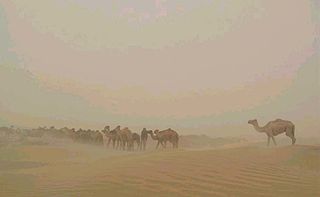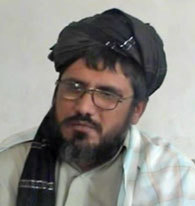
Baghlan is one of the thirty-four provinces of Afghanistan. It is in the north of the country. As of 2020, the province has a population of about 1,014,634.

Khost is one of the 34 provinces of Afghanistan, located in the southeastern part of the country. Khost consists of thirteen districts and the city of Khost serves as the capital of the province. To the east, Khost Province is bordered by North Waziristan and Kurram, which are districts in Pakistan’s Khyber Pakhtunkhwa province. Historically, Khost used to be a part of Paktia, and the larger region surrounding Khost is still referred to as Loya Paktia.

Nimruz or Nimroz is one of the 34 provinces of Afghanistan, located in the southwestern part of the country. It lies to the east of the Sistan and Baluchestan Province of Iran and north of Balochistan, Pakistan, also bordering the Afghan provinces of Farah and Helmand. It has a population of about 186,963 people. The province is divided into five districts, encompassing about 649 villages.

Sar-e Pol, also spelled Sari Pul, is one of the thirty-four provinces of Afghanistan, located in the north of the country. It borders Ghor and Bamyan to the south, Samangan to the east, Balkh and Jowzjan to the north, and Faryab to the west. The province is divided into 7 districts and contains 896 villages. It has a population of about 632,000, which is multi-ethnic and mostly a tribal society. The province was created in 1988, with the support of northern Afghan politician Sayed Nasim Mihanparast. The city of Sar-e Pol serves as the provincial capital.

The Buddhas of Bamiyan were two 6th-century monumental statues carved into the side of a cliff in the Bamyan valley of Hazarajat region in central Afghanistan, 130 kilometres (81 mi) northwest of Kabul at an elevation of 2,500 metres (8,200 ft). Carbon dating of the structural components of the Buddhas has determined that the smaller 38 m (125 ft) "Eastern Buddha" was built around 570 CE, and the larger 55 m (180 ft) "Western Buddha" was built around 618 CE, which would date both to the time when the Hephthalites ruled the region. On orders from Taliban founder Mullah Omar, the statues were destroyed in March 2001, after the Taliban government declared that they were idols. International and local opinion strongly condemned the destruction of the Buddhas.

The Ministry of Defense is the cabinet ministry of Afghanistan responsible for overseeing the country's military. The ministry's headquarters is located in Kabul.
Dr. Amin Tarzi is the director of Middle East studies at the Marine Corps University in Quantico, Virginia.

The Ministry of Interior Affairs is the cabinet ministry of Afghanistan responsible for law enforcement, civil order and fighting crime. The ministry's headquarters is located in Kabul.
The Landai Sin Valley, or the Bashgal Valley, is a geographical feature of Nuristan Province, eastern Afghanistan, formed by the Landai Sin River which empties into the Kunar River at Barikot, Kamdesh District in Nuristan, Afghanistan. The largest town in the valley is Kamdesh. The lower Bashgal Valley is inhabited by the Kom people.
The Islamic Revolutionary State of Afghanistan was a small Salafist Islamic state located in the north of Bashgal Valley, Nuristan Province. It was founded by Mawlawi Afzal during the nationwide Afghan mujahideen insurgency against the Soviet-backed People's Republic of Afghanistan and established consulates in Saudi Arabia and Pakistan.

Abdul Karim Brahui is a former politician in Afghanistan. He last served as Governor of Nimroz Province from 2010 to 2012, and before that he served as a minister in the Cabinet of Afghanistan. From February 2009 to August 2010, Brahui served as Minister of Refugees. In 2004, Brahui was appointed as Minister of Borders and Tribal Affairs.
Mullah Sher Mohammad Malang was a Taliban governor of Nimruz Province, Afghanistan under the Taliban government. He is a Popalzai. After the Taliban took control in the south in the mid-1990s, he was appointed governor of Nimruz and then later served with the military.
Hamidullah Niyazmand was appointed governor of Nimroz, Afghanistan, following the Taliban's capture of the province in early 1995. Though Hamidullah had been raised in Pakistan, his father had been a mullah in the province, and his family had some standing there. Though Hamidullah was relatively familiar with, and respectful of local customs, he diverged from this on the issue of language, making Urdu the official language of the province, allowing Pashto, but not recognizing other languages.
Mullah Ghani served briefly as the Taliban-appointed governor of Nimruz Province, Afghanistan in 1995. Ghani was culturally similar to his predecessor, Hamidullah Niyazmand. Ghani was removed from power when Jamaat forces counter-attacked the capital city of Zaranj later in 1995.

Muhammad Rasul was the leader of the High Council of the Islamic Emirate of Afghanistan, a Taliban dissident group in Afghanistan, until the group's dissolution in 2021. He was a Taliban-appointed governor of Nimruz Province, Afghanistan. Rasul exerted pressure and suppression on Pashtun factions unpopular with the Taliban, and made a considerable fortune controlling cross-border drug-smuggling through Nimruz.
Mawlawi Mohammad Afzal was a Panjpiri-educated Afghan clergyman of the Kam tribe from Barg-i-Matal, Nuristan Province. He studied in Deoband, and later at Akora, Pakistan, before teaching at a madrassa in Karachi, and then in his native village of Badmuk.
The Armed Forces of the Islamic Emirate of Afghanistan, also referred to as the Islamic Emirate Armed Forces and the Afghan Armed Forces, is the military of Afghanistan, ruled by the Taliban government from 1996 to 2001 and since August 2021. The Taliban created the first iteration of the emirate's armed forces in 1997 after taking over Afghanistan following the end of the Afghan Civil War which raged between 1992 and 1996. However, the first iteration of the armed forces was dissolved in 2001 after the downfall of the first Taliban government following the United States invasion of Afghanistan. It was officially reestablished on November 8, 2021 after the Taliban's victory in the War in Afghanistan on August 15, 2021 following the recapture of Kabul and the collapse of the U.S.-backed Islamic Republic of Afghanistan and its Afghan National Army as a whole, with the re-establishment of the Islamic Emirate of Afghanistan after being out of power for 20 years.
Abd-al Karim (1897–1927) was an Afghan emir who ruled only in the Southern Province from July 1924 to January 1925.
The following is an outline of the series of events that led up the War in Afghanistan (2001–2021).




























